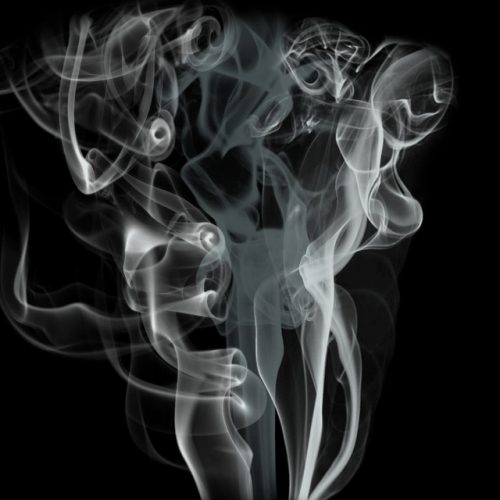Shooting a Revolution is a smart polyseme that Donatella Della Ratta uses to describe the grim reality of Syria: one shoots to kill and one shoots to film. The two are incredibly intertwined, and, at war, all sides are guilty of both.
Della Ratta’s metaphor extends further than a mere binary wordplay — there are many ways of filming, just as there are many ways of killing.
Shooting to kill, while becoming a morbid everydayness in Syria, plays multiple roles and purposes: rebels shoot to spark a revolution, while regime shoots to quash it. Multiple parties shoot to torture and terrorise. We read reports about ISIS newcomers shooting civilians as part of their initiation processes. Finally, many in Syria shoot in order to survive – as their only strategy to outwait the war.
In her book, Della Ratta shows how shooting to film has also picked up multiple roles, often curiously mirroring those of shooting to kill. Filming, to broadcast their discontent with the regime was one of the main means of resistance used by protesters. It also served as a tool to connect with other protesters across different sections and areas of the country. Meanwhile, the Syrian regime used filming to appease society and dissuade people from joining the uprising. Multiple fighter groups film torture and pose with mutilated bodies to inspire and/or horrify. Finally, many film to document atrocities, hoping that visual material can later be used to deliver justice.
Della Ratta thoroughly analyses all these different roles images play in Syria’s political life. She shows how they merge and transform into one another. Despite the book’s primary focus on war and revolutionary imagery, Shooting a Revolution is also more broadly a book about visual culture in contemporary age — as many discussed tendencies manifest globally. Della Ratta documents the political strategies and objectives of a society that is fully enmeshed in the transformative experience of political violence while having a full realisation of what importance the visual culture holds and is trying hard to make the best of it. She writes a story of how that visual culture is reinvented in order to be adjusted to new political contexts. How it keeps picking up new roles and missions and keeps constantly failing at them.
The first part of Della Ratta’s book focuses on the practice of “enlightenment”(tanwir) that began in the early 1960s, together with the introduction of television in Syria, and to a certain extent lasts till this day (pp. 15-35). Tanwir was co-produced by the Syrian state apparatus and cultural producers and promoted seemingly reformist ideals that aimed at educating Syrian society through TV series. On the one hand, tanwir was conceived to educate society on personal and civic freedoms and to heal it from its presumed backwardness. On the other hand, it was meant to shield the regime’s political and social reforms and contain society’s dissatisfaction.
Della Ratta’s ethnography not only analyses how tanwir was produced, but also how shortly after the uprising began it ultimately failed at its major mission – to appease society.
The core of tanwir’s success in its early days was what Della Ratta calls ‘whisper strategy’— a form of soft communication, through which decisions are made and things are agreed upon. It is crucial to all parties involved as no one can claim ownership or control over it, therefore absolving all sides from responsibility. It is also a good illustration of Syria’s regime system as a whole, and as to why so many, even when the regime committed atrocities became well-known, were so reluctant to assign guilt to Bashar al-Assad. Not only in the West, where he moonlights as the most “western” of all Arab leaders, but also inside Syria. Della Ratta demonstrates how, for a long time, al-Assad not only managed to hold a firm grip on power but also kept a blameless reputation across wide sections of society (pp. 58 -68). That was in large part due to the curious combination of tanwir, which always portrayed the president as a benevolent figure liberating Syrian society from its darkness, and ‘whisper strategy’, which put countless numbers of regime agents between the presidency and any kind of act-taken, and thus, absolving him from direct responsibility.
Della Ratta shows how the regime eventually failed at appeasing crowds through TV production. The main culprit of its failure this time around was the same multilayered power structure that kept Bashar al-Assad guilt-proof for so many years. However, after the beginning of the uprising, the regime’s indecisiveness and clashing agendas within it failed to establish a discourse that could have had a democratising and mitigating effect. Although Della Ratta documents attempts, that were made. Instead, the regime quickly shifted towards “security and stability” rhetoric over reformism and started designating “terrorist” labels to all those fighting and protesting (pp. 68-79).
Curiously activists were fast to see through the regime’s new PR attempts and quickly started to appropriate and subvert its messaging.
In the second part of the book, Della Ratta looks at various acts of defiance, which she calls ‘creative insurgency’ (pp. 79-99). The most salient early revolutionary acts consisted of attempts at ‘culture jamming’ (DeLaure and Fink, 2017), where protesters appropriated and remediated regime-backed visual campaigns while imposing their own defiant and ironic meanings on them. Be it geeks posting ironic memes on social media, or rebel fighters posing for a photo-shoot at a famous TV series set in the area they have newly captured — everyone was aware of the power of symbolic language. The problem is — symbols easily shift hands.
However, while Della Ratta acknowledges the ‘revolutionary resilience’ encoded in these acts of creative insurgency, she also gives a very sobering reading of the larger effect they had on the revolution. She is critical of the discourse on what she calls the ‘quasi-magical powers’ of networked technologies and their ability to enable democracy. She rather claims that because of the internet’s infrastructure most attempts at online protest remained ‘mere contributions,’ ‘means to register opinions’ and failed to foster any meaningful conversation (pp. 86-89).
She remains equally cautious about the activists’ videos from protests and battlefield. She calls such visual content ‘networked images’ and deems that their ultimate quality is that they no longer exist as ‘evidence-based’ images — generated to document and prove crimes and human rights violations. They have rather become merely non-stop sharing material floating across the internet having neither a particular receiver nor significant impact. It is precisely their circulation, and not the ability to represent conflict in any way, that creates value to the ‘networked images.’ The value that, now, mainly serves the monetary interests of the networked platforms, since the activists who uploaded them essentially mostly lost control of their dissemination (pp. 149-179).
 Yet, according to Della Ratta, it is these videos where a lot of revolutionary action was taking place. On the one hand, they served as a unifying virtual gathering place for the protests, which have scattered all across the country. Videos united geographically and religiously divided country by broadcasting shared political goals. What is more, they provided a sense of solidarity, since the protesters were filmed echoing lines and chants from the past protests. On the other hand, the video, and the camera that has filmed it, essentially became a tool of resistance and a weapon in this mediatized conflict. Filming themselves and others protesting and sometimes even dying, as Della Ratta puts it, “is probably the most significant achievement of the Syrian protester” (140), as it is not only a mean to register their political dissent but also a way to (re)gain one’s agency in regime’s highly controlled environment.
Yet, according to Della Ratta, it is these videos where a lot of revolutionary action was taking place. On the one hand, they served as a unifying virtual gathering place for the protests, which have scattered all across the country. Videos united geographically and religiously divided country by broadcasting shared political goals. What is more, they provided a sense of solidarity, since the protesters were filmed echoing lines and chants from the past protests. On the other hand, the video, and the camera that has filmed it, essentially became a tool of resistance and a weapon in this mediatized conflict. Filming themselves and others protesting and sometimes even dying, as Della Ratta puts it, “is probably the most significant achievement of the Syrian protester” (140), as it is not only a mean to register their political dissent but also a way to (re)gain one’s agency in regime’s highly controlled environment.
When commenting on the Mohamed Bouazizi’s self-immolation that triggered the Tunisian Revolution, Didier Fassin stated, that his body has simultaneously become “the site of the violence exerted by […] military dictatorship and the ultimate resistance of the individual, which demonstrates how individual subjectivity can overcome political subjection” (Fassin, 2011). In Della Ratta’s study that site is the video. Although failing to live up to its revolutionary missions, videos have given protesters an opportunity to self-document their own history and reclaim agency of their political dissent to crystalize “the self in the historical document”(2).
DeLaure, Marilyn and Fink, Moritz. 2017 . Culture Jamming. Activism and the Art of Cultural Resistance (New York, New York University Press.
Fassin, Didier. 2011. “The Trace: Violence, Truth, and the Politics of the Body”, keynote at the 23rd Social Research conference, The New School of Social Research, New York, February 10, 2011.
Della Ratta, Donatella. 2018. Shooting a Revolution. Visual Media and Warfare in Syria, (London, Pluto Press, 2018.
Featured image by ArtTower (Courtesy of Pixabay)



